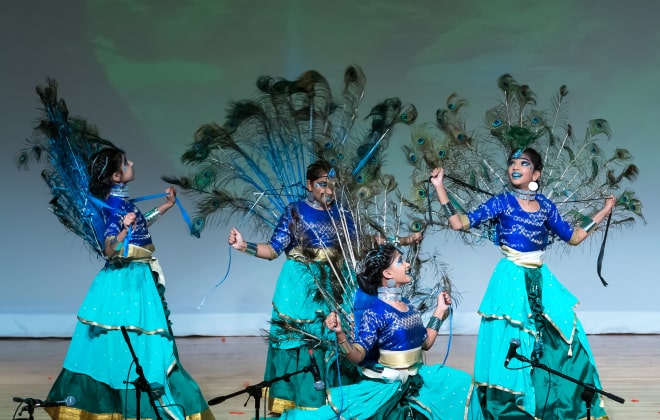Mayilattam, also called Mayilnrityam, has been performed since the Sangam period, which lasted from the 3rd century BC to the 4th century AD, as an offering for Lord Subrahmanya, in the Hindu temples in Tamil Nadu and Kerala.The name means the dance of peacock (mayil means peacock and attam dance).
This dance form is typically performed for Pongal, the harvest festival in Tamilnadu, Thai Pusam, and Kartigaideepam. This dance is more of a custom than for entertainment or artistic significance.

Executed usually by rural women, this traditional South Indian dance is quite tricky and requires extensive training and practice. Dancers are seen performing acts and choreography that demand strength and the capability to balance the attire while dancing. The dancers are dressed as peacocks and even wear peacock feathers, a part of the costume with a beak in the front. The dress is flashy and in shades of blue. The styles and choreography highlight the movements of peacocks and call for extreme flexibility, stamina, and agility from the performers.

Peacock being the Vahanam, the vehicle used by Lord Muruga, the bird is thus worshipped and revered in these states. Several peacock dance traditions developed not only in India but in other countries in Asia, especially Myanmar, and in the western and northern parts of Cambodia, West Java in Indonesia, the Indian subcontinent in Southern India, Sri Lanka, and Bangladesh.
Mayilattam has similar variants like Kaalia Attam (bull dance), Karadi Attam-bear dance, Aali Attam-demon dance, and Pambu Attam-snake dance. The language is usually Tamil and Malayalam.